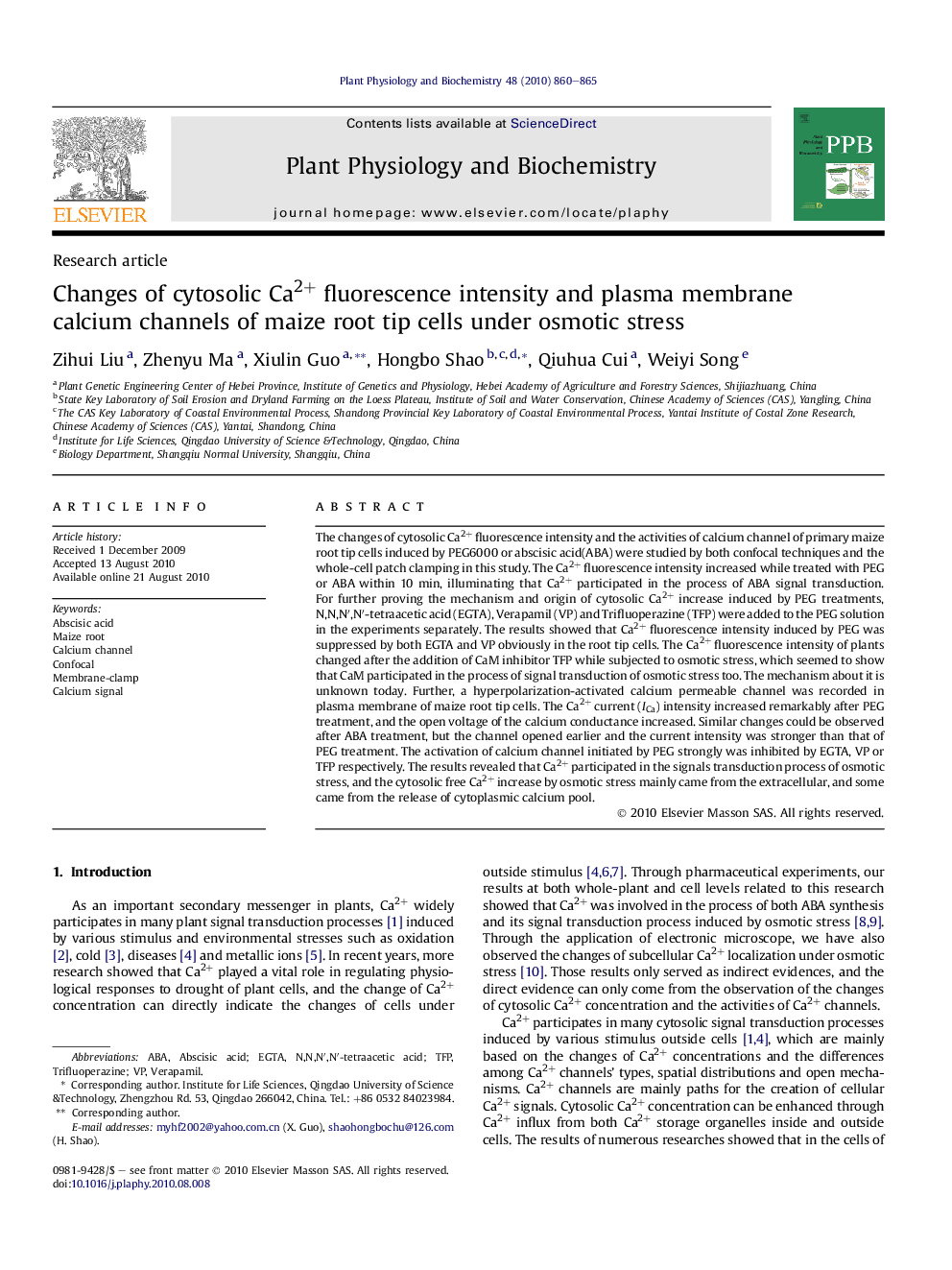| Article ID | Journal | Published Year | Pages | File Type |
|---|---|---|---|---|
| 2016450 | Plant Physiology and Biochemistry | 2010 | 6 Pages |
The changes of cytosolic Ca2+ fluorescence intensity and the activities of calcium channel of primary maize root tip cells induced by PEG6000 or abscisic acid(ABA) were studied by both confocal techniques and the whole-cell patch clamping in this study. The Ca2+ fluorescence intensity increased while treated with PEG or ABA within 10 min, illuminating that Ca2+ participated in the process of ABA signal transduction. For further proving the mechanism and origin of cytosolic Ca2+ increase induced by PEG treatments, N,N,N′,N′-tetraacetic acid (EGTA), Verapamil (VP) and Trifluoperazine (TFP) were added to the PEG solution in the experiments separately. The results showed that Ca2+ fluorescence intensity induced by PEG was suppressed by both EGTA and VP obviously in the root tip cells. The Ca2+ fluorescence intensity of plants changed after the addition of CaM inhibitor TFP while subjected to osmotic stress, which seemed to show that CaM participated in the process of signal transduction of osmotic stress too. The mechanism about it is unknown today. Further, a hyperpolarization-activated calcium permeable channel was recorded in plasma membrane of maize root tip cells. The Ca2+ current (ICa) intensity increased remarkably after PEG treatment, and the open voltage of the calcium conductance increased. Similar changes could be observed after ABA treatment, but the channel opened earlier and the current intensity was stronger than that of PEG treatment. The activation of calcium channel initiated by PEG strongly was inhibited by EGTA, VP or TFP respectively. The results revealed that Ca2+ participated in the signals transduction process of osmotic stress, and the cytosolic free Ca2+ increase by osmotic stress mainly came from the extracellular, and some came from the release of cytoplasmic calcium pool.
Research highlights► Ca2+ participated in the signals transduction process. This process is caused by osmotic stress. The increased cytosolic free Ca2+ by osmotic stress mainly comes from the extracellular. Little is from the release of cytoplasmic calcium pool.
